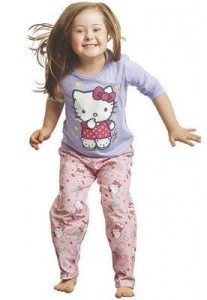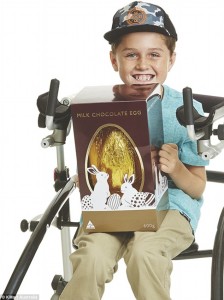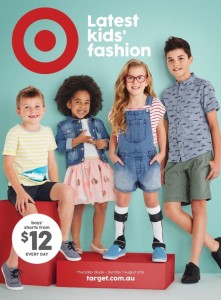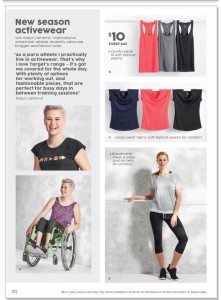* This post was first published as a guest post on the “Inclusion Together” blog of Early Childhood Intervention Australia.
Catia Malaquias
When my son Julius was born with Down syndrome I started to see the world with some appreciation of the perspective of a person with a disability. One of the things I soon realised was the invisibility of people with disability in our mainstream media – “out of sight, out of mind” – the classic exclusionary cliché – but so true.
It is often and correctly said that the most disabling aspect of disability is the barrier presented by exclusionary societal attitudes – itself the result of centuries of people with disability being segregated from involvement in their communities and societies, even their families – sometimes quite bluntly and harshly with forced institutionalisation, and other times more subtly – with the gloss that “special kids” should be in “special places” doing “special things” – but segregation all the same.
The greater educational, social and economic outcomes of the full inclusion of children and adults with disability in all mainstream aspects of life underlies the realisation of the human rights framework for people with disability – it is the philosophy behind the UN Convention on the Rights of Persons with Disability – which Australia’s Disability Discrimination Act 1992 seeks to reflect for the Australian community.
Yet legal rights mean little if society’s preconceptions obstruct them from being enjoyed.
So how does including children with disability in the mainstream media – in advertising, newspapers, movies, books etc – make a difference?

At its simplest it helps undermine and change the preconceptions, stereotypes and culture of low expectations that limits the realisation of the rights and potential of people with disability.
But how does it do this?
- First, being visually portrayed together with and as part of one’s community sends a powerful inclusionary message of belonging in that community.
- Second, inclusion in the media – being reflected as part of your community – is self-validating in confirming one’s status as part of the community – a sense of belonging is strongly associated with mental health.
- Third, seeing and listening to children with disability fosters an appreciation of their perspectives and promotes understanding and acceptance.

I established the Starting with Julius project (www.startingwithjulius.org.au and Facebook page www.facebook.com/startingwithjulius) to stimulate conversation and awareness around two key aspects of realising full inclusion for people with disability:
- Inclusion in the media – or ‘ad inclusion’ given an initial focus on inclusive advertising; and
- Inclusive education – the education of children with disability alongside their age peers in regular mainstream classrooms (see SWJ IncludED startingwithjulius.org.au/category/swj-included/).
Starting with Julius recently worked with Kmart and Target – who have taken ‘ad inclusion’ to a new level in Australia this year – featuring children and adults with disability on a sustained commitment basis in all their retail advertising media.

This week I am in Geneva, Switzerland at the United Nations launching a new international platform GADIM– the Global Alliance for Disability in Media and Entertainment (www.gadim.org ) – which I co-founded with like-minded others. GADIM, which has the support of the Special Rapporteur on the Rights of Persons with Disabilities and the International Disability Alliance was launched on 3 October during the Social Forum 2016 at which I delivered the following speech (www.startingwithjulius.org.au/united-nations-pre-launch-of-global-alliance-for-disability-in-media-and-entertainment/ ).
I am hopeful that we can help the media industry appreciate and realise the opportunity of inclusive media – for the benefit of the 1 in 5 people living with disability and in the interest of an inclusive society that welcomes all.
[Cover photo © eeni meeni miini moh ]
Thank you for visiting our website. You can also keep up with our mission for #adinclusion by liking our Facebook page or following us on Twitter @StartingWJulius
